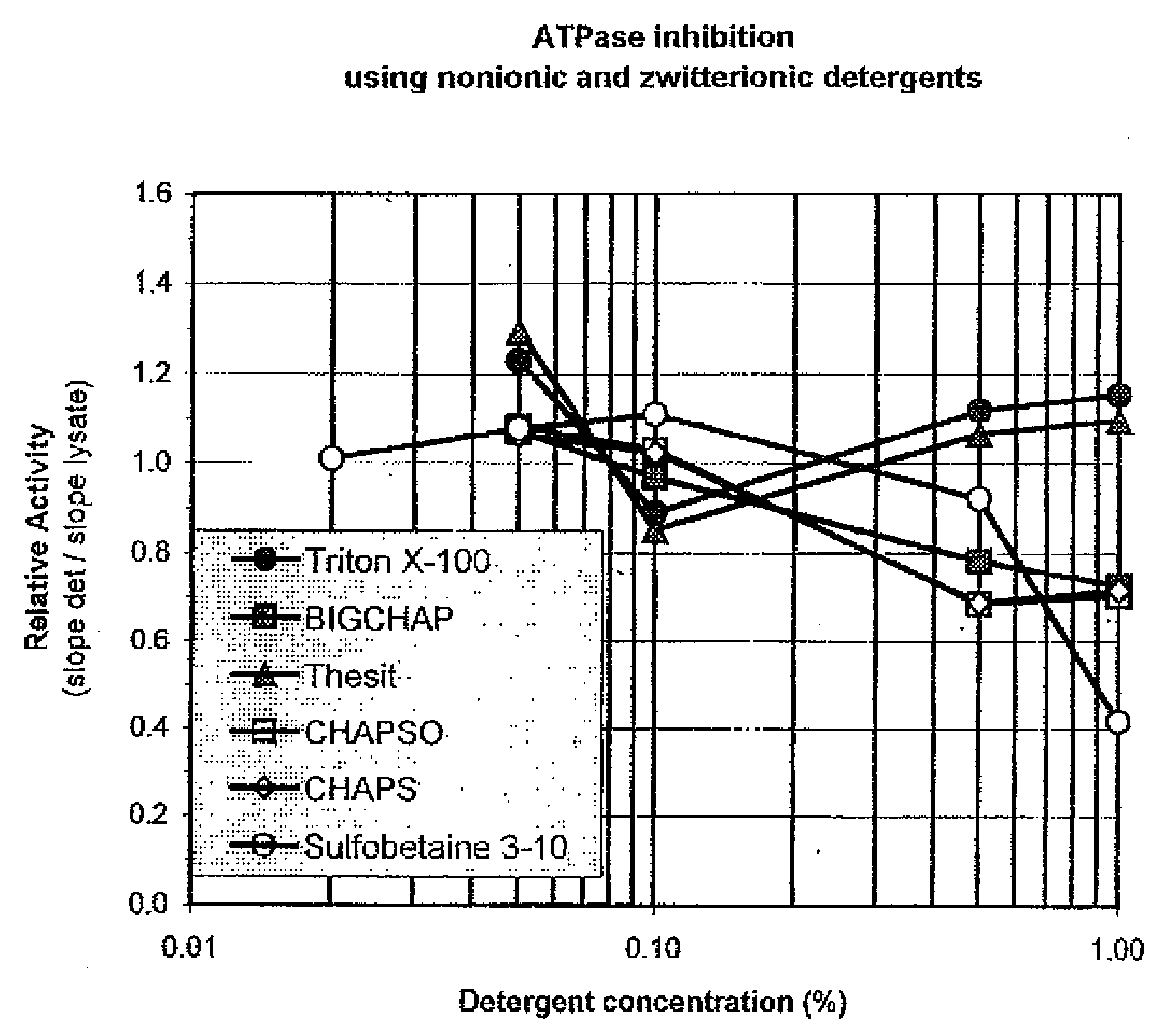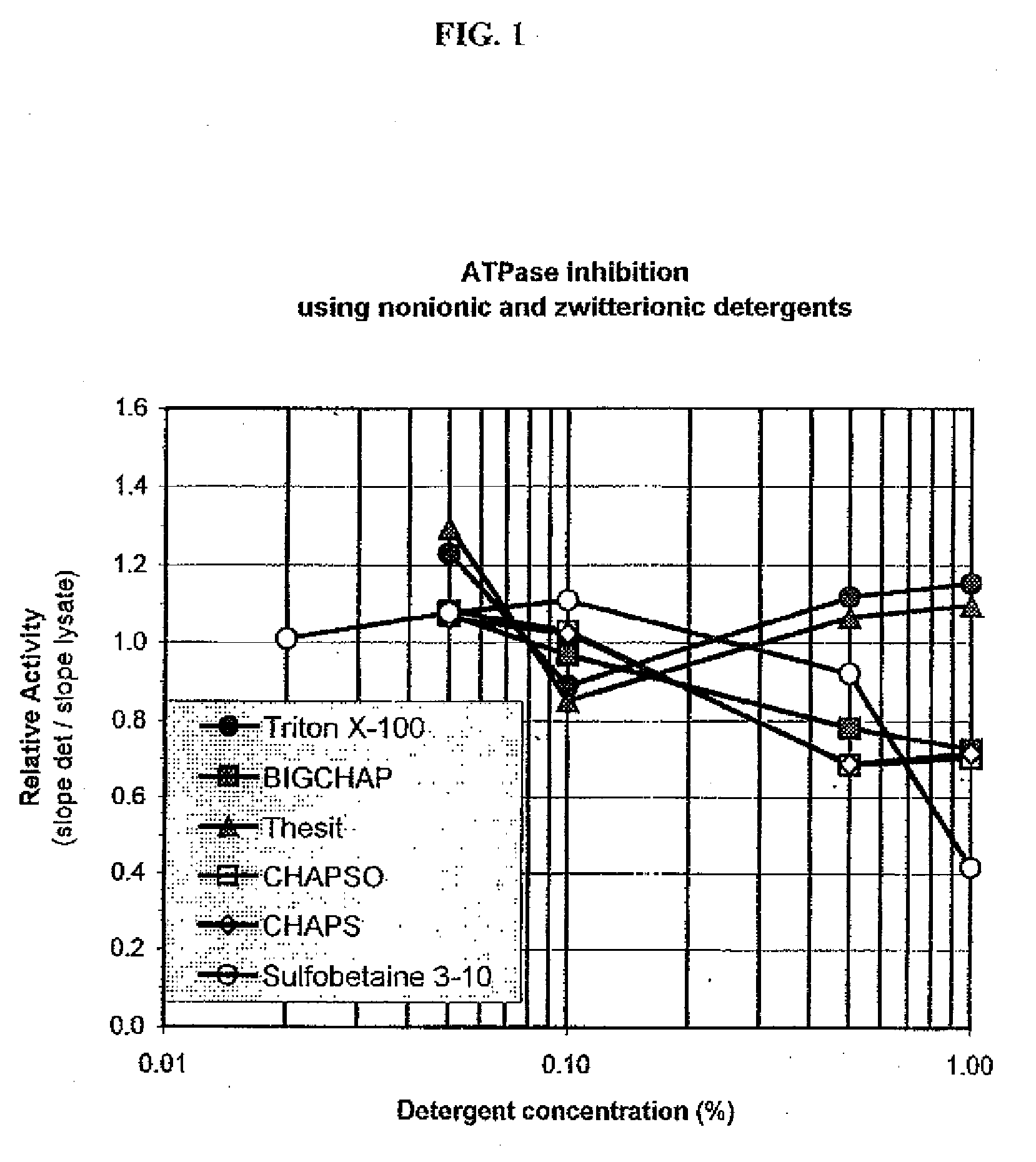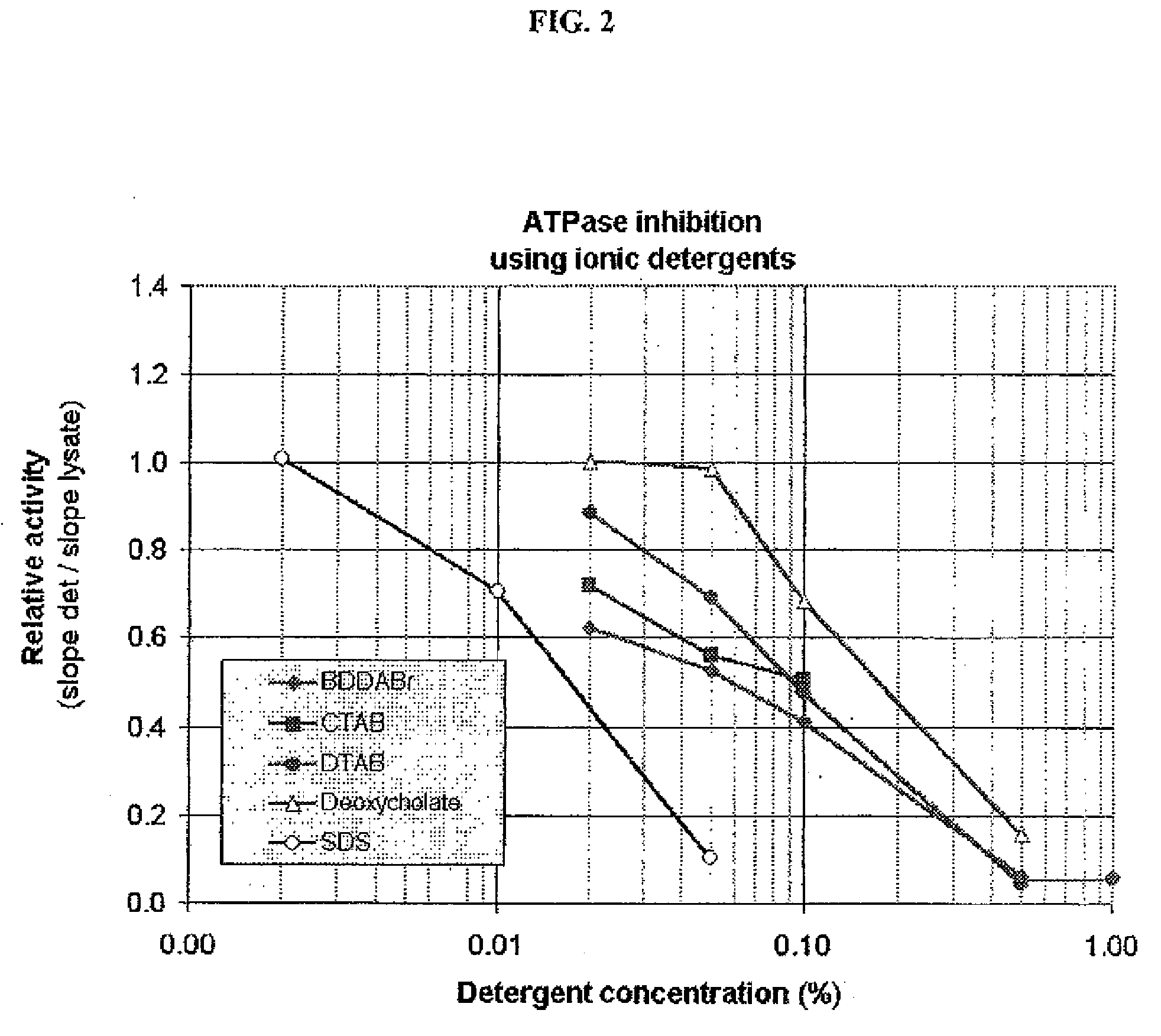Kits for detection of atp
a technology of atp and kit, applied in the field of cell biology and molecular biology, can solve the problems of no atp detection system that provides a composition or method capable, atp-poor dead or dying cells, and affecting the function of luciferas
- Summary
- Abstract
- Description
- Claims
- Application Information
AI Technical Summary
Benefits of technology
Problems solved by technology
Method used
Image
Examples
example 1 i
Detergents that Inhibit ATPases
[0112]This example was designed to test the ability of different detergents to inhibit ATPase activity endogenous to cells and demonstrate the level of such inhibition. Three separate detergents in each of four detergent classes were tested: anionic [SDS (Sodium dodecyl sulfate), Bioterge (an α olefin sulfate), and sodium deoxycholate], nonionic [TRITON X-100, BigCHAP (N,N-bis(3-D-Gluconamidopropyl)cholamide) and THESIT® (polyethylene glycol 400 dodecyl ether, Fluka, #88315)], cationic [BDDABr (Benzyldimethyldodecylammonium bromide), CTAB (Cetyltrimethylammonium bromide), and DTAB (dodecyltrimethylammonium bromide)] and zwitterionic [CHAPS (3-[(3Cholamidopropyl)dimethylammonio]propanesulfonic acid), CHAPSO (3-([3-Cholamidopropyl]dimethylammonio)-2-hydroxy-1-propanesulfonate), and Sulfobetaine 3-10 (N-Dodecyl-N,N-dimethyl-3-ammonio-1-propanesulfonate)]. Detergents were obtained from Sigma, Fluka and Aldrich.
[0113]L929 cells (ATCC CCL-1; 1.5×105 cells / ml...
example 2 ii
Detergents That Inhibit ATPases
[0116]This example tested the seven detergents that demonstrated inhibition of ATPase activity in Example 1 herein above at a lower percentage than was previously tested. The experiment was performed as detailed in Example 1. The average relative light unit values and the percent of ATP remaining values are listed below in Table F and G respectively.
TABLE FAverage Relative Light Unit Values5 min75 min169 min222 min260 minControlsCell Lysate5296.251613.68334.28225.95123.08ATP +22565.9516238.0020241.5519302.5018528.1HepesSamples0.5% DTAB5189.84564.654111.894230.514267.320.02%5870.431997.09435.05329.83227.72DTAB0.02%6215.322686.49962.85604.47429.86BDDABr0.02%6120.51622.61291.09245.55136.43Sulfobetaine0.02%5962.611694.47368.11241.05135.25Deoxy-cholate0.01% SDS13116.2010753.0312051.6311822.0311900.730.002% SDS5773.391574.34278.67236.28128.58
TABLE GPercent ATP RemainingCondition5 min75 min169 min222 min260 minLysate Control100.0030.476.314.272.32ATP Control1...
example 3 stability
of Reagent Composition
Room Temp
[0121]The detergents used for inhibition of endogenous ATPase activity in a sample also affect activity of luciferase. This example was designed to test the stability and functionality of the reagent composition (“reagent composition”) over time when it comprised different luciferase enzymes and when the ATPase inhibitor was present at a concentration that significantly inhibited the ATPase activity endogenous to the sample as demonstrated in Example 1 and Example 2 herein above. It is ultimately the extended stability of a reagent composition, comprising an ATPase inhibitor and a luciferase enzyme, which provides a composition useful for measuring ATP, in a sample or samples, over an extended period of time. The most preferred luciferase for use in such a reagent composition would be one whose stability is minimally decreased in the presence of an ATPase inhibitor when that ATPase inhibitor is present in the reagent composition at a concentration capa...
PUM
| Property | Measurement | Unit |
|---|---|---|
| temperature | aaaaa | aaaaa |
| time | aaaaa | aaaaa |
| time | aaaaa | aaaaa |
Abstract
Description
Claims
Application Information
 Login to View More
Login to View More - R&D
- Intellectual Property
- Life Sciences
- Materials
- Tech Scout
- Unparalleled Data Quality
- Higher Quality Content
- 60% Fewer Hallucinations
Browse by: Latest US Patents, China's latest patents, Technical Efficacy Thesaurus, Application Domain, Technology Topic, Popular Technical Reports.
© 2025 PatSnap. All rights reserved.Legal|Privacy policy|Modern Slavery Act Transparency Statement|Sitemap|About US| Contact US: help@patsnap.com



